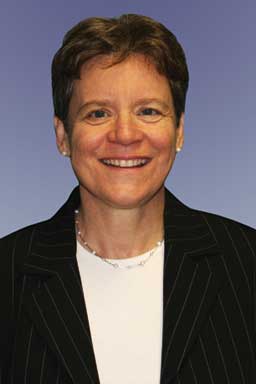From the Executive Editor: Life before porcine circovirus associated diseases
Perhaps I should say “life before postweaning multisystemic wasting syndrome (PMWS).” It was fall of 1998 when Dr John Harding’s manuscript describing PMWS was published in Swine Health and Production.1 I was a new, and might I add, naive and impressionable editor, determined to do a good job of rigorous science. The editorial board was perhaps wisely concerned about publishing a manuscript on a syndrome that was new, unknown, and not described elsewhere. It is easy to say today “What, were you crazy?” after porcine circovirus associated diseases have dominated much of what happened in the past few years, but remember, that was 1998. This syndrome was described in a few high-health herds in Saskatchewan. Many readers likely needed to look at a map of Canada to find the source! Our response as an editorial board was to publish three commentaries that were solicited from Drs Steve Henry, Beth Lautner, and me.2-4 In typical JSHAP fashion, we invited the authors of the manuscript to write a rebuttal to the commentaries. In preparing for this editorial, I re-read the whole series: first the commentaries and then the manuscript by Harding et al.5 If I remember correctly, it was an awkward situation for me as the editor, on one hand accepting the manuscript for publication and on the other hand publishing a series of commentaries that could be construed as an “out” in case it was not a new syndrome. From one scientist to another, I feel I owe Dr Harding an apology.
I had a déjà vu moment when I read the paper by Huang et al6 in this issue of the journal, describing the porcine periweaning failure to thrive syndrome. Here we are, 13 years later, publishing another manuscript describing a new syndrome. I hope if nothing else, I have gained some wisdom over time. This manuscript includes, among other authors, Dr Harding and Dr Henry. It did not cause the flurry of excitement requiring commentaries that occurred for PMWS. However, it might be interesting to summarize some of what those commentaries stated. Dr Henry said the down side of syndromes is that they are used to lump confusing clinical signs into one acronym that may be more harmful than helpful to our endeavor to advance science. They need to be critically and objectively evaluated by the scientific method. One of his bad examples was “MMA” that was called a disease and therefore led to inappropriate use of extra-label treatments for sows that likely were experiencing coliform mastitis. Dr Henry said that a good example was “SMEDI” – an acronym that was used until the etiologic agent was identified. He concluded by stating that syndromes are used to communicate what we are seeing in the field. I said that medicine is full of syndromes that have been used for generations. However, some new names adopted by industry, such as “mad cow disease” and “mystery swine disease,” are harmful to the industry because they cause fear in the minds of the public. Further, I discussed fulfilling Koch’s postulates that would suggest a new syndrome, if caused by an etiologic agent, should always be found in cases and never found in nondiseased animals, and the agent should induce the disease under controlled laboratory settings. We now know that the agent of PMWS is found in healthy animals, but it is also found in affected animals and can be reproduced in a laboratory setting. Dr Lautner rightly stated that without a solid, well-funded, on-going surveillance system in the swine industry, we rely on private practitioners and diagnostic laboratories to recognize and report new syndromes. Drs Harding et al5 concluded the commentary series by stating that the medical fields, both swine and human, are filled with syndromes that assist the practitioner and producer in recognizing and then managing or treating the clinical problem. In the past 13 years, my understanding of autism in human medicine has been enhanced by the change in terminology to “autism spectrum disorder,” illustrating the wide spectrum of clinical presentations. Dr Harding et al5 said their manuscript describing the epidemiology and clinical signs of pigs with PMWS was meant as a description of a syndrome that will “facilitate understanding and communication of a disease entity or condition in swine.” It is interesting to look back over the past few years to realize how indeed we have applied scientific scrutiny and rigor to the recommendations of the commentaries. We worked to show that porcine circovirus type 2 was the etiology, that the agent typically requires a secondary agent, that indeed the clinical symptoms can differ from pig to pig and from herd to herd, and that it was very helpful for the industry to have an acronym to use when confronted with the clinical problem. We have changed the acronym to “PCVAD” to more fully encompass the full spectrum of the clinical syndromes observed in the field.
Here we are now with porcine periweaning failure to thrive syndrome. Let us hear the rallying cry for participation in the search for understanding of the syndrome and scientific rigor as we approach this new problem. I know we can do it!
References
1. Harding JCS, Clark EG, Strokappe JH, Willson PI, Ellis JA. Postweaning multisystemic wasting syndrome: Epidemiology and clinical presentation. Swine Health Prod. 1998;6:249–254.
2. Henry, S. The truth about “syndromes.” Swine Health Prod. 1998;6:245
3. Lautner B. Emerging diseases – Are there alternatives to the “vet rumor mill”? Swine Health Prod. 1998;6:245–246.
4. Dewey C. When is a new “syndrome” really a new disease? Swine Health Prod. 1998;6:246–247.
5. Harding JCS, Willson PI, Clark EG, Ellis JA. PMWS is a useful acronym. Swine Health Prod. 1998;6:247–248.
6. Huang Y, Henry S, Friendship R, Schwartz K, Harding J. Clinical presentation, case definition, and diagnostic guidelines for porcine periweaning failure to thrive syndrome. J Swine Health Prod. 2011;19:340–344.
— Cate Dewey, DVM, MSc, PhD
